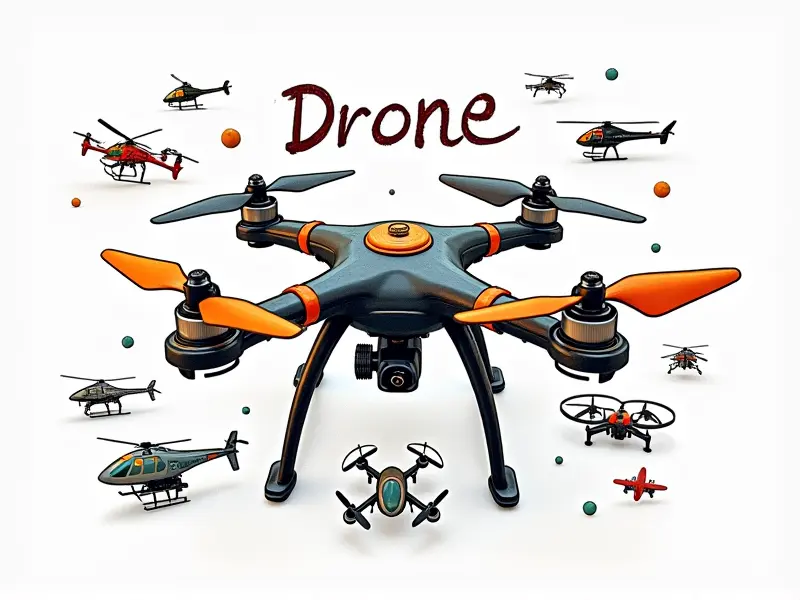FPV video latency problems?

Understanding and Fixing FPV Latency
First-person view (FPV) drone racing has gained immense popularity among enthusiasts, but one of the biggest challenges faced by pilots is latency in video transmission. This delay can significantly impact your performance and enjoyment during flights. In this article, we will explore various aspects of FPV latency, including its causes, effects, and solutions to minimize it.
Minimize Delay in Your FPV Drone Setup
To achieve the best possible video transmission quality, you need to optimize your entire FPV system. This includes selecting high-quality components such as cameras, transmitters, receivers, and antennas that are designed for low latency. Additionally, ensure that all connections between these components are secure and free from interference.
Quick Fixes for High FPV Latency
- Reduce Distance: The farther your drone is from the ground station, the higher the latency will be due to signal propagation delays. Try flying closer to reduce this issue.
- Improve Antenna Placement: Ensure that both the transmitter and receiver antennas are properly aligned and positioned for optimal signal strength.
- Optimize Video Settings: Adjust your camera's frame rate, resolution, and compression settings to find a balance between quality and latency.
Tips to Improve FPV Video Quality
In addition to reducing latency, improving overall video quality is crucial for an immersive flying experience. Here are some tips:
- Use High-Quality Components: Invest in top-tier cameras and transmitters that offer superior image clarity and lower latency.
- Optimize Signal Strength: Use high-gain antennas to ensure strong signal reception, even at long distances.
- Minimize Interference: Avoid flying near other FPV systems or sources of electromagnetic interference.
Low-Latency Solutions for FPV Pilots
To combat high latency issues effectively, consider implementing the following solutions:
- Upgrade to 5.8 GHz Transmitters: These offer better performance and lower latency compared to 900 MHz or 1.2 GHz systems.
- Implement Diversity Antennas: Use dual antennas on both the transmitter and receiver for improved signal reliability.
- Opt for Digital Transmission Systems: Digital signals are less prone to interference and can provide lower latency than analog systems.
Combatting Lag in FPV Video Transmission
Lag is a common issue that affects the responsiveness of your FPV system. To combat lag, focus on optimizing each component:
- Optimize Camera Settings: Adjust frame rate and resolution to reduce processing time.
- Improve Signal Quality: Use high-quality antennas and ensure proper placement for optimal signal strength.
- Avoid Interference: Stay away from other wireless devices that could cause interference with your FPV system.
Eliminating FPV Video Transmission Delays
To eliminate delays in your FPV video transmission, follow these steps:
- Choose Low-Latency Components: Select transmitters and receivers designed for minimal latency.
- Optimize Antenna Placement: Ensure that antennas are positioned correctly to maximize signal strength.
- Reduce Distance Between Drone and Ground Station: The closer your drone is, the lower the latency will be.
How to Reduce Delay in FPV Systems
To reduce delay in your FPV system, consider these strategies:
- Upgrade Your Equipment: Invest in high-quality components that are specifically designed for low latency.
- Optimize Signal Path: Ensure that all connections and cables are secure and free from interference.
- Implement Diversity Antennas: Use dual antennas to improve signal reliability and reduce latency.
Fixing High FPV Latency Problems Now
If you're experiencing high latency issues, here are some immediate steps you can take:
- Check Connections: Ensure that all cables and antennas are securely connected.
- Adjust Antenna Placement: Re-position your antennas for better signal reception.
- Update Firmware: Make sure that all components have the latest firmware updates installed.
Minimizing Latency in Your FPV System
To minimize latency, focus on optimizing every aspect of your setup:
- Select Low-Latency Components: Choose transmitters and receivers that are designed for minimal delay.
- Optimize Signal Path: Ensure that all connections are secure and free from interference.
- Implement Diversity Antennas: Use dual antennas to improve signal reliability and reduce latency.
Top Tips for Low-Latency FPV Video
To achieve the lowest possible latency in your FPV video transmission, follow these top tips:
- Choose High-Quality Components: Invest in premium transmitters and receivers designed for low latency.
- Optimize Signal Path: Ensure that all connections are secure and free from interference.
- Avoid Interference: Stay away from other wireless devices that could cause signal degradation.
Conclusion
FPV latency can be a frustrating issue for drone pilots, but with the right knowledge and equipment, you can significantly reduce it. By optimizing your FPV system components, improving antenna placement, and minimizing interference, you'll enjoy smoother video transmission and enhanced flying experiences. Remember to regularly update firmware and explore new technologies as they become available to stay ahead of latency issues.

